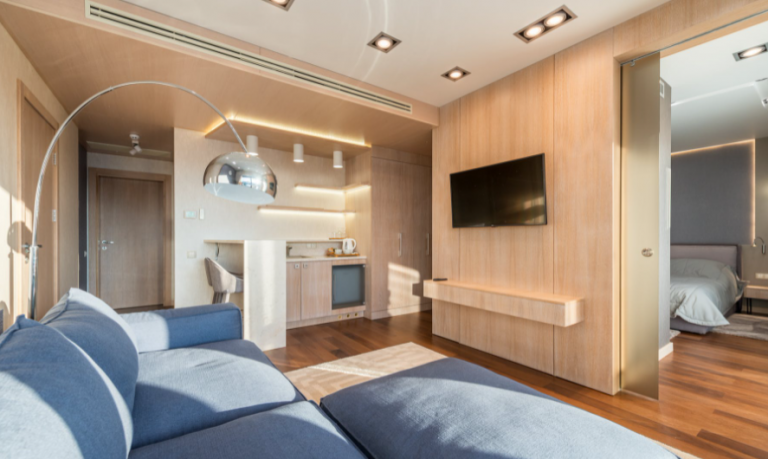Architectural Material Guide
Softwood Architectural Cladding – Also known as bamboo cladding, this softwood is similar to bamboo insulation. The outer layer of the cladding is made of fiber-cement, while the inner layer comprises moisture-resistant resin-coated hardwood. Compared to hardwood cladding, bamboo insulation is more effective at controlling thermal transmission between floors, walls, and ceilings. Its lightweight makes it easy to install.
Hardwood Interior and Exterior Cladding – In addition to the building’s exterior and interior surfaces, exterior and interior hardwood cladding are also an important part of the building’s interiors. This type of exterior cladding consists of tightly packed strips of hardwood that are installed over the traditional wood siding and vinyl siding. While this type of hardwood cladding can be a cheaper alternative to genuine hardwood interior cladding, it’s not recommended for high-traffic areas or where water may be present. Exterior hardwood cladding is best for composite decks, garages, storage sheds, farmhouses, pre-construction or remodeling projects, and for DIY projects only.
Benefits of Using Softwood as Building Material
- A great way to add a sense of elegance, class, and longevity to your home, Softwood Building material is the most affordable and Eco-friendly of all hardwood choices.
- It is also available in a wide variety of colors and grains and can often be found at discount prices.
- CLT cross laminated hardwood, also known as CLT, is a cross-linking engineered softwood building material consisting of minimum three cross laminated layers of durable sawn hardwood. These layers are bonded together using structural adhesives, resulting in a strong and sturdy product that can be utilized for flooring, roofing and wall applications.
- Wood is a material that offers a rich, wide range of color and texture. However, softwoods do have a tendency to expand and contract during intense changes in temperature, and to contract during more stable temperatures. As a result of cross-linking the wood, however, softwood building material will not change in color or texture due to variations in climate.
- In addition, because the timber-solid stress-grading process used in the manufacturing of softwood lumber provides a tighter, stronger grain, the timber will last longer than hardwoods, reducing the possibility of termite infestation.

Benefits of Using Hardwood as Building Material
- When you consider the impressive performance qualities of Cumaru hardwood, there’s no mystery why it’s becoming such a favorite choice for indoor projects of all kinds. Cumaru is a dense, durable hardwood lumber with an incredible amount of natural oil durability and resistance to a number of different kinds of damage. It also has an incredible amount of stability, even in challenging conditions, thanks to its unique cross-grain layering and knotty texture. Cumaru hardwood also has a high degree of resistance to moisture and termites, which makes it a wonderful choice for the making of cabinets, tables, and other wood products.
- For this reason, the wide variety of uses that come with the use of heavy duty and long lasting hardwood lumber is becoming increasingly clear. Hardwood flooring is a perfect example of this.
- When you install hardwood flooring over your existing floor, you can dramatically increase the usable living space in your home without spending a great deal of money or time and effort on a do-it-yourself project.
- Hardwood flooring can be installed on any level, including in the basement, attic, and decking areas of your house. In addition to being able to make your house look much better than it did before installation, a high density hardwood floor will also provide superior sound deadening qualities and make for a safer home and family.
- Hardwood lumber is also very attractive, thanks in large part to its wide array of natural shades and intricate grains.
- You’ll find nearly endless color choices when choosing hardwood lumber for your next decking, siding, flooring project, or remodeling project. Because the various types of hardwood are readily available from most hardware stores and home improvement outlets, you will also have no problem finding a style and color that perfectly matches your home’s decor and your own personal preferences. If you’re ready to take your project ideas to the next level and begin transforming your home, hardwood building material options are out there to help you achieve your goals and dreams.
Get the Building Material in Canada
The lumber is categorized into two forms: hardwood and softwood. For the purposes of this article both classification types will be discussed. Hardwood refers to the kind of wood listed above, including eucalyptus, cypress, cedar, redwood, white oak, poplar, redwood and spruce. Softwood refers to a blend of any of the above species. If you are interested in softwood lumber for your home’s construction, you should consult Tropical Forest Products first for your building envelope, rooflines and structural purposes.

